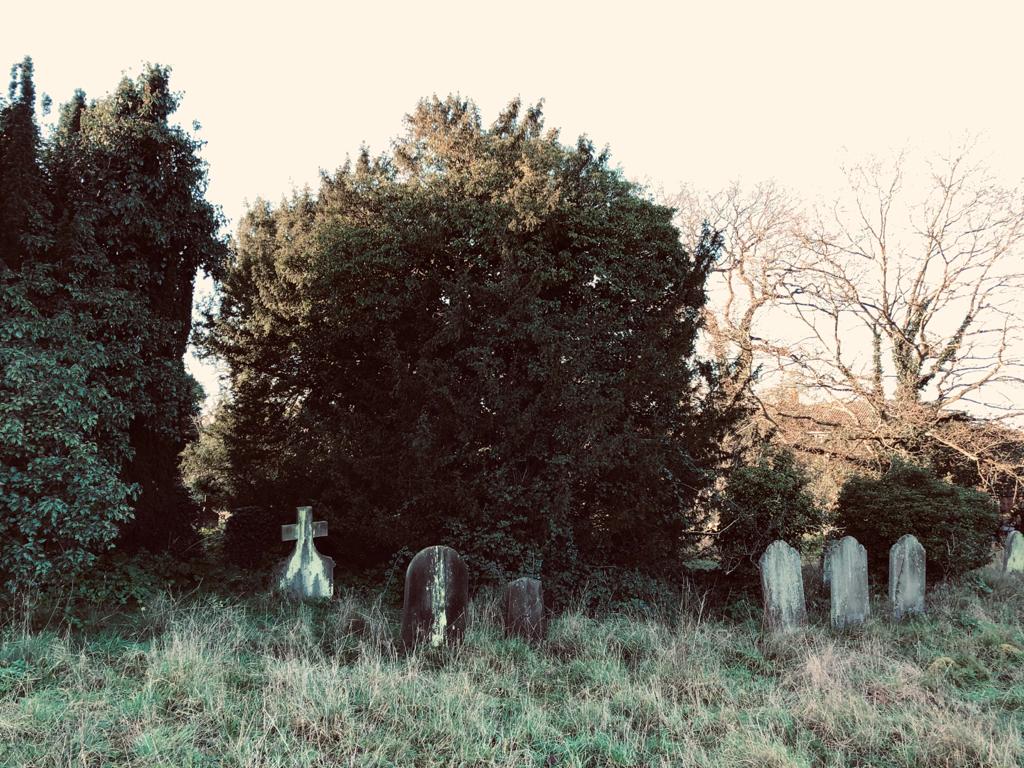Bungay Cemetery Recording Project
Graveyards possess an important role in a community as the final resting place for its population, and these spaces bear witness to the desire for respectful commemoration of the dead. Although Bungay’s Old Cemetery has been somewhat neglected in recent years, its quiet presence and dilapidated gravestones provide a space for reflection and remembrance.

Graveyards are fascinating records of social change, as they were constructed, adapted or abandoned depending on people’s needs. The Waveney Valley Community Archaeology Group and the University of East Anglia’s Interdisciplinary Institute for the Humanities plan to launch a community graveyard recording project in the Spring of 2021. This will collate information about the memorials in the Old Cemetery. By measuring, recording, mapping and deciphering the gravestones and memorials, we aim to explore the social history of Bungay’s past population, the events that shaped people’s life experience, and the small details of daily routines and lives long since lost.
The first phase of this work will take place through two parallel strands of the project. The first strand, recording will take place using respectful, non-invasive methods to measure and record the gravestones, methods long established by the University of Liverpool and the Council for British Archaeology. The second strand, social history research, will be desk-based research undertaken by trained volunteers, who will receive training to investigate census records, death records, newspapers and other archival evidence. This desk-based research will enable volunteers to create narratives about the lives of some of those buried at the site. This will enhance our understanding of the social history of Bungay, the wider Waveney Valley, and the role of the cemetery in everyday life. We hope that these stories will be useful to family historians and local families who may not know they have ancestors buried there.

The first phase of the project will offer opportunities for local volunteers to take part in both strands, depending on accessibility requirements. We aim to offer the opportunity for participants to obtain recording skills, desk-based research skills and 3D recording skills. We plan to record a number of the memorials as 3D models which will be displayed on the project website, and we will provide training for the volunteers to do this.
The second phase of the project will bring together the two strands of the project, to create a variety of public engagement opportunities. We plan to hold an exhibition about the project at the local Museum in Bungay, hold an information afternoon at the site for members of the public and the local school, to coincide with Heritage Open Days in September, and to create a website with all the information and narratives that have been discovered during the project. As a legacy of the project, we aim to raise funds to create interpretation boards for the site itself, with some of the stories about the lives of those buried there, as part of a wider Bungay Town Heritage Trail.
Pictures © Jason Kercher & Andrew Macdonald






I am interested in volunteering for this project. I live in Bungay and have done so for 40+ years. I am a retired headteacher and have qualifications in museum education and reminiscence.
Let me know if I can be of help.
I would love to help please as I live in bungay, sounds really interesting as I walk round the cementry every day with my dog and often wonder about what they were like